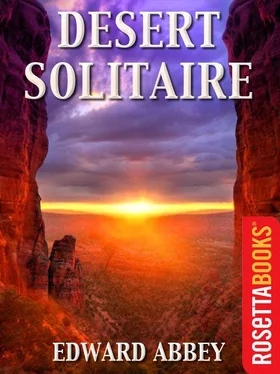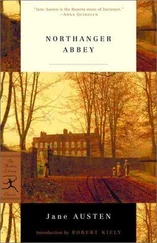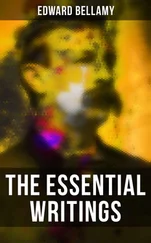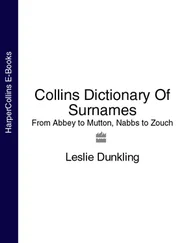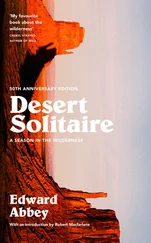Abbey, Edward - Desert Solitaire (Edward Abbey Series )
Здесь есть возможность читать онлайн «Abbey, Edward - Desert Solitaire (Edward Abbey Series )» — ознакомительный отрывок электронной книги совершенно бесплатно, а после прочтения отрывка купить полную версию. В некоторых случаях можно слушать аудио, скачать через торрент в формате fb2 и присутствует краткое содержание. Год выпуска: 2011, Издательство: RosettaBooks, Жанр: Старинная литература, на английском языке. Описание произведения, (предисловие) а так же отзывы посетителей доступны на портале библиотеки ЛибКат.
- Название:Desert Solitaire (Edward Abbey Series )
- Автор:
- Издательство:RosettaBooks
- Жанр:
- Год:2011
- ISBN:нет данных
- Рейтинг книги:4 / 5. Голосов: 1
-
Избранное:Добавить в избранное
- Отзывы:
-
Ваша оценка:
- 80
- 1
- 2
- 3
- 4
- 5
Desert Solitaire (Edward Abbey Series ): краткое содержание, описание и аннотация
Предлагаем к чтению аннотацию, описание, краткое содержание или предисловие (зависит от того, что написал сам автор книги «Desert Solitaire (Edward Abbey Series )»). Если вы не нашли необходимую информацию о книге — напишите в комментариях, мы постараемся отыскать её.
Desert Solitaire (Edward Abbey Series ) — читать онлайн ознакомительный отрывок
Ниже представлен текст книги, разбитый по страницам. Система сохранения места последней прочитанной страницы, позволяет с удобством читать онлайн бесплатно книгу «Desert Solitaire (Edward Abbey Series )», без необходимости каждый раз заново искать на чём Вы остановились. Поставьте закладку, и сможете в любой момент перейти на страницу, на которой закончили чтение.
Интервал:
Закладка:
I am taken by the notion to experiment—on the rabbit. Suppose, I say to myself, you were out here hungry, starving, no weapon but your bare hands. What would you do? What could you do?
There are a few stones scattered along the trail. I pick up one that fits well in the hand, that seems to have the optimum feel and heft. I stare at the cottontail hunched in his illusory shelter under the bush. Blackbrush, I observe, the common variety, sprinkled with tightly rolled little green buds, ready to burst into bloom on short notice. Should I give the rabbit a sporting chance, that is, jump it again, try to hit it on the run? Or brain the little bastard where he is?
Notice the terminology. A sportsman is one who gives his quarry a chance to escape with its life. This is known as fair play, or sportsmanship. Animals have no sense of sportsmanship. Some, like the mountain lion, are vicious—if attacked they defend themselves. Others, like the rabbit, run away, which is cowardly.
Well, I’m a scientist not a sportsman and we’ve got an important experiment under way here, for which the rabbit has been volunteered. I rear back and throw the stone with all I’ve got straight at his furry head.
To my amazement the stone flies true (as if guided by a Higher Power) and knocks the cottontail head over tincups, clear out from under the budding blackbush. He crumples, there’s the usual gushing of blood, etc., a brief spasm, and then no more. The wicked rabbit is dead.
For a moment I am shocked by my deed; I stare at the quiet rabbit, his glazed eyes, his blood drying in the dust. Something vital is lacking. But shock is succeeded by a mild elation. Leaving my victim to the vultures and maggots, who will appreciate him more than I could—the flesh is probably infected with tularemia— I continue my walk with a new, augmented cheerfulness which is hard to understand but unmistakable. What the rabbit has lost in energy and spirit seems added, by processes too subtle to fathom, to my own soul. I try but cannot feel any sense of guilt. I examine my soul: white as snow. Check my hands: not a trace of blood. No longer do I feel so isolated from the sparse and furtive life around me, a stranger from another world. I have entered into this one. We are kindred all of us, killer and victim, predator and prey, me and the sly coyote, the soaring buzzard, the elegant gopher snake, the trembling cottontail, the foul worms that feed on our entrails, all of them, all of us. Long live diversity, long live the earth!
Rejoicing in my innocence and power I stride down the trail beneath the elephantine forms of melting sandstone, past the stark shadows of Double Arch. The experiment was a complete success; it will never be necessary to perform it again.
Back in the warm pickup I enjoy a well-earned sandwich and drink my coffee before driving on another six miles, through clouds of wind-driven dust and sand, to the old Turnbow Cabin and the beginning of the trail to Delicate Arch.
Once there was a man named Turnbow who lived in the grimy wastelands of an eastern city which we will not mention here—the name, though familiar to all the world, is not important. This Turnbow had consumption. His doctors gave him six months. Mr. Turnbow in his despair fled to the arid wilds, to this very spot, built the cabin, lived on and on for many years and died, many years ago.
The cabin stands on the banks of the unpotable waters of Salt Creek, a shallow stream on a bed of quicksand. Drinking water is available half a mile upstream at a tributary spring. Turnbow Cabin itself is a well-preserved ruin (nothing decays around here) made of juniper, pinyon and cottonwood logs, no two alike in shape or size. The crudity of the construction followed from the scarcity of wood, not lack of skill. The cracks between the unhewn logs were chinked with adobe; a few fragments still remain. The walls have a morbid greenish hue that matches the coloration of the nearby hills; this is dust from the Morrison formation, a loose friable shale containing copper oxides, agate, chert, and traces of vanadium and uranium. There is a doorway but no door, a single window and no glass. The floor consists of warped, odd-size planks. In one corner is a manger for horses, an addition made long after the death of Mr. Turnbow. Cobwebs complete with black widow spiders adorn the darker corners under the ceiling. In the center of the room is a massive post of juniper shoring up the ancient, sagging roof, which is a thatchwork affair of poles, mud and rock, very leaky. As shelter, the cabin cannot be recommended, except for its shade on a hot day.
Back of the cabin are the lonesome Morrison hills, utterly lifeless piles of clay and shale and broken rock, a dismal scene. In front are the walls of Dry Mesa and Salt Creek Canyon. It is a hot, sunken, desolate place, closed in and still, lacking even a view. As Genghis Khan said of India, “The water is bad and the heat makes men sick.” A haunted place, in my opinion, haunted by the ghost of the lonely man who died here. Except for myself no one lives within thirty miles of Turnbow Cabin.
With relief I turn my back on this melancholy ruin and take the golden trail up the long ledge of Navajo sandstone which leads to Delicate Arch. I cross the swinging footbridge over Salt Creek, pestered on the way by a couple of yellow cowflies (cattlemen call them deerflies). The cowfly, or deerfly if you prefer, loves blood. Human blood especially. Persistent as a mosquito, it will keep attacking until either it samples your blood or you succeed in killing it, or both. The most artful among them like to land in your hair and attach themselves to the scalp, where they will not be noticed until too late. But they are home-loving insects; once over the bridge and away from the slimy little creek you leave them behind.
Many have made the climb to Delicate Arch, so many that the erosion of human feet is visible on the soft sandstone, a dim meandering path leading upward for a mile and a half into a queer region of knobs, domes, turrets and coves, all sculptured from a single solid mass of rock. What do the pilgrims see? The trail climbs and winds past isolate pinyons and solitary junipers to a vale of stone where nothing has happened for a thousand years, to judge from the quietude of the place, the sense of waiting that seems to hover in the air. From this vale you climb a second ledge blasted across the face of a cliff, round a corner at the end of the trail and Delicate Arch stands before you, a fragile ring of stone on the far side of a natural amphitheatre, set on its edge at the brink of a five hundred foot drop-off. Looking through the ring you see the rim of Dry Mesa and far beyond that the peaks of the La Sal Mountains.
There are several ways of looking at Delicate Arch. Depending on your preconceptions you may see the eroded remnant of a sandstone fin, a giant engagement ring cemented in rock, a bow-legged pair of petrified cowboy chaps, a triumphal arch for a procession of angels, an illogical geologic freak, a happening—a something that happened and will never happen quite that way again, a frame more significant than its picture, a simple monolith eaten away by weather and time and soon to disintegrate into a chaos of falling rock (not surprisingly there have been some, even in the Park Service, who advocate spraying Delicate Arch with a fixative of some sort—Elmer’s Glue perhaps or Lady Clairol Spray-Net). There are the inevitable pious Midwesterners who climb a mile and a half under the desert sun to view Delicate Arch and find only God (“Gol-dangit Katherine where’s my light meter, this glare is turrible”), and the equally inevitable students of geology who look at the arch and see only Lyell and the uniformity of nature. You may therefore find proof for or against His existence. Suit yourself. You may see a symbol, a sign, a fact, a thing without meaning or a meaning which includes all things.
Читать дальшеИнтервал:
Закладка:
Похожие книги на «Desert Solitaire (Edward Abbey Series )»
Представляем Вашему вниманию похожие книги на «Desert Solitaire (Edward Abbey Series )» списком для выбора. Мы отобрали схожую по названию и смыслу литературу в надежде предоставить читателям больше вариантов отыскать новые, интересные, ещё непрочитанные произведения.
Обсуждение, отзывы о книге «Desert Solitaire (Edward Abbey Series )» и просто собственные мнения читателей. Оставьте ваши комментарии, напишите, что Вы думаете о произведении, его смысле или главных героях. Укажите что конкретно понравилось, а что нет, и почему Вы так считаете.
